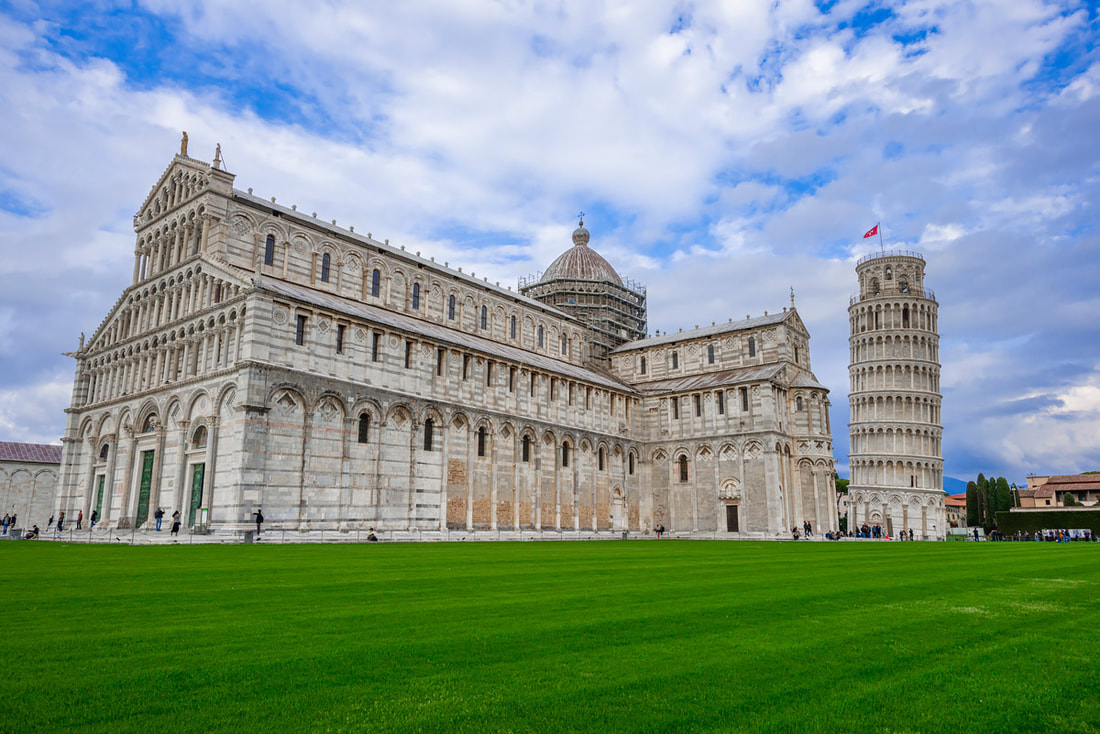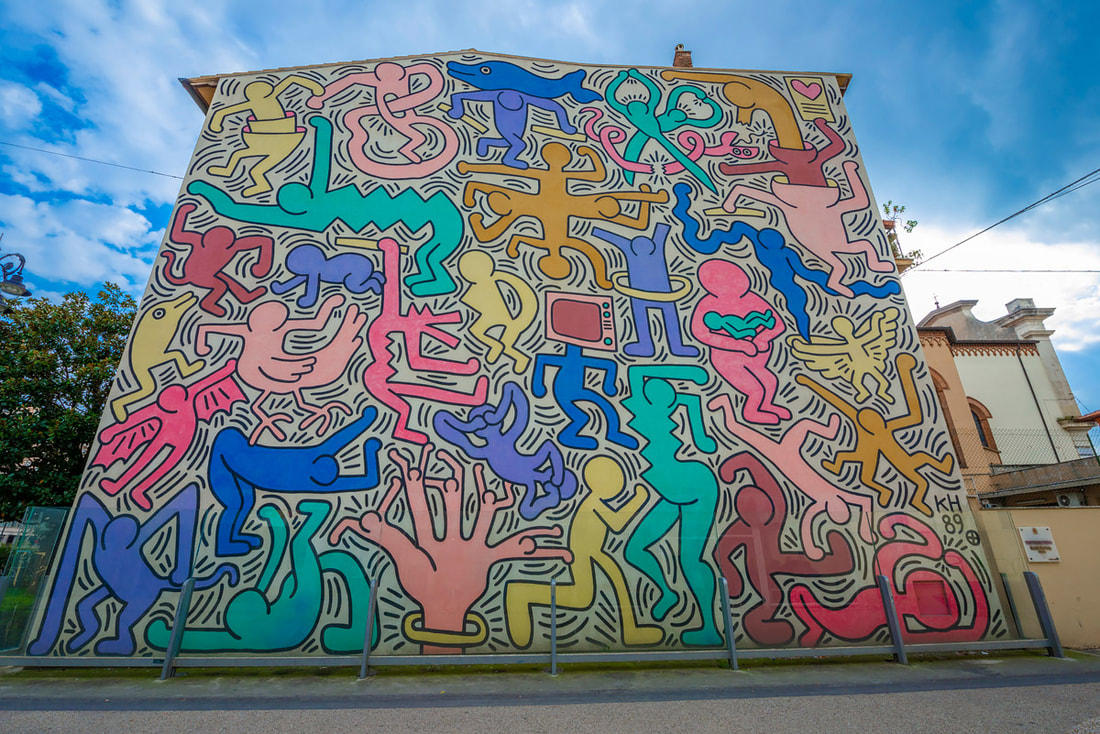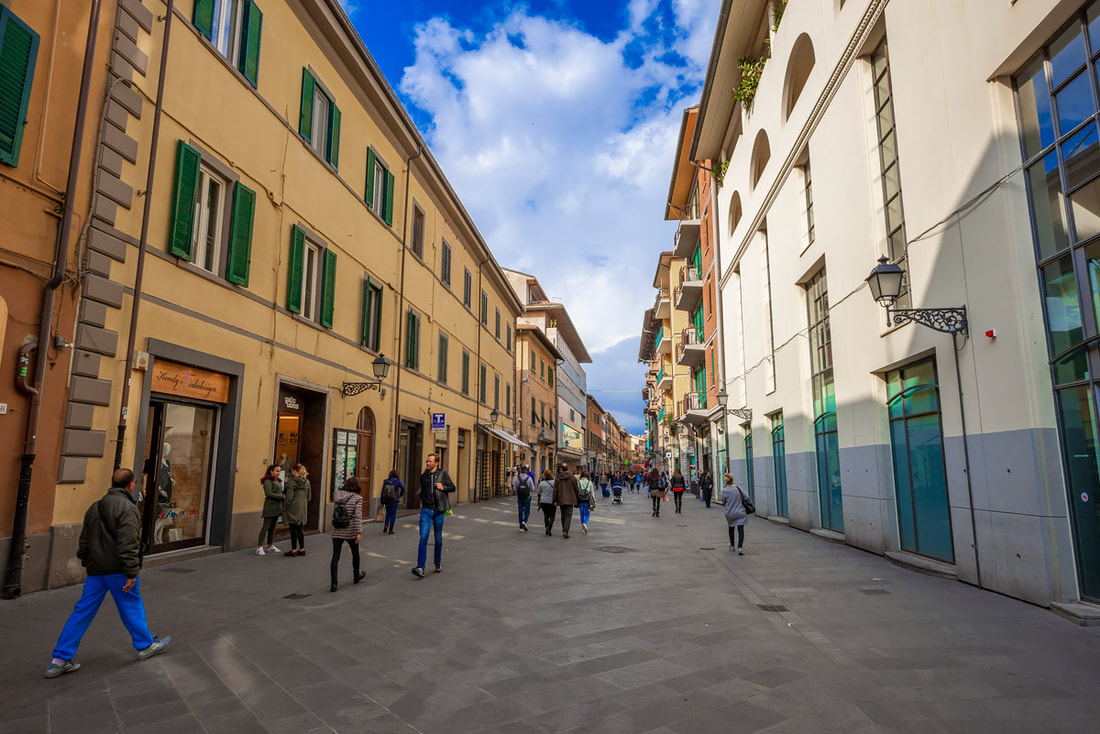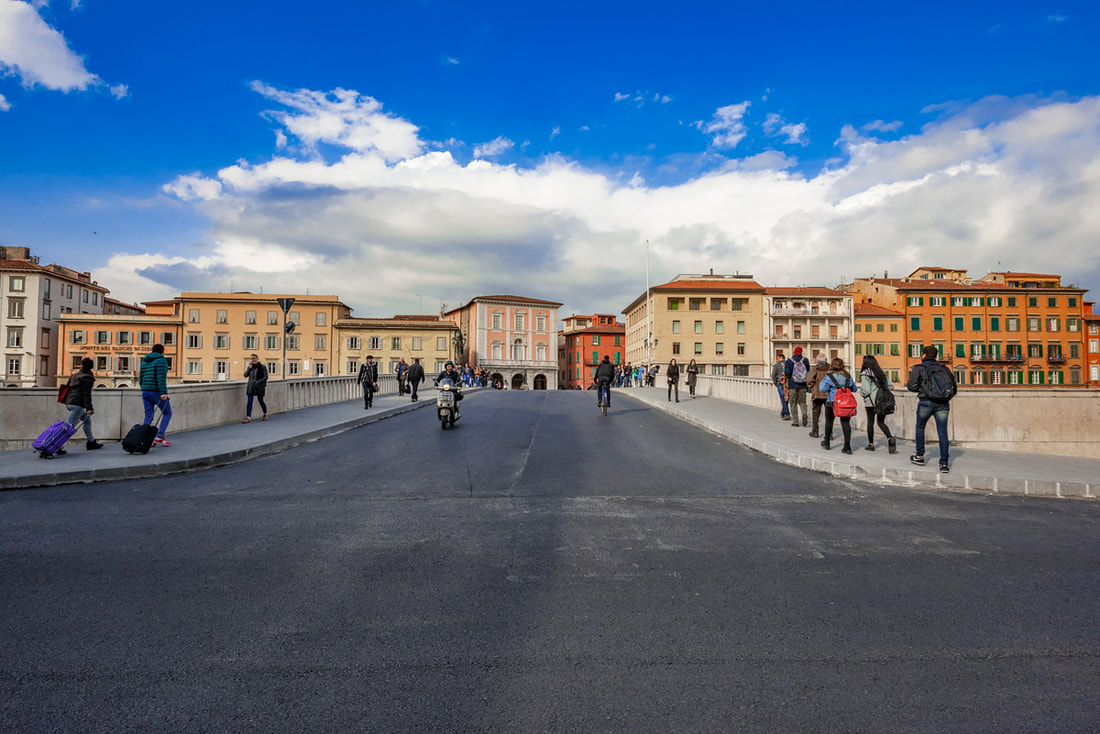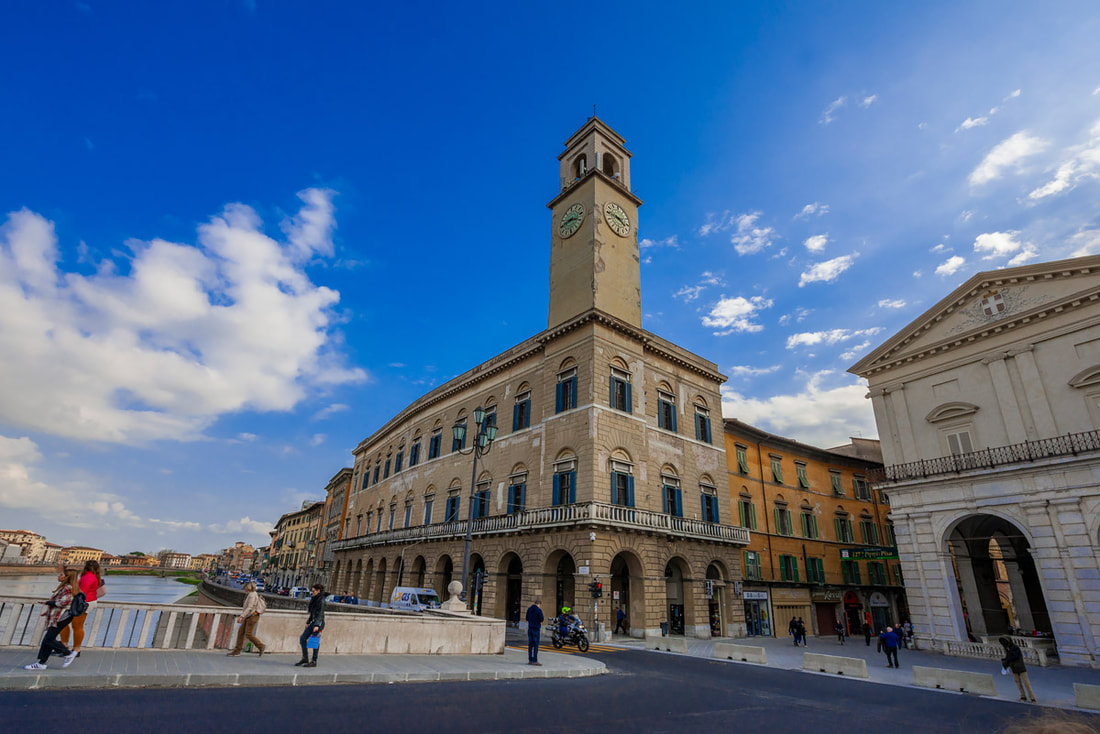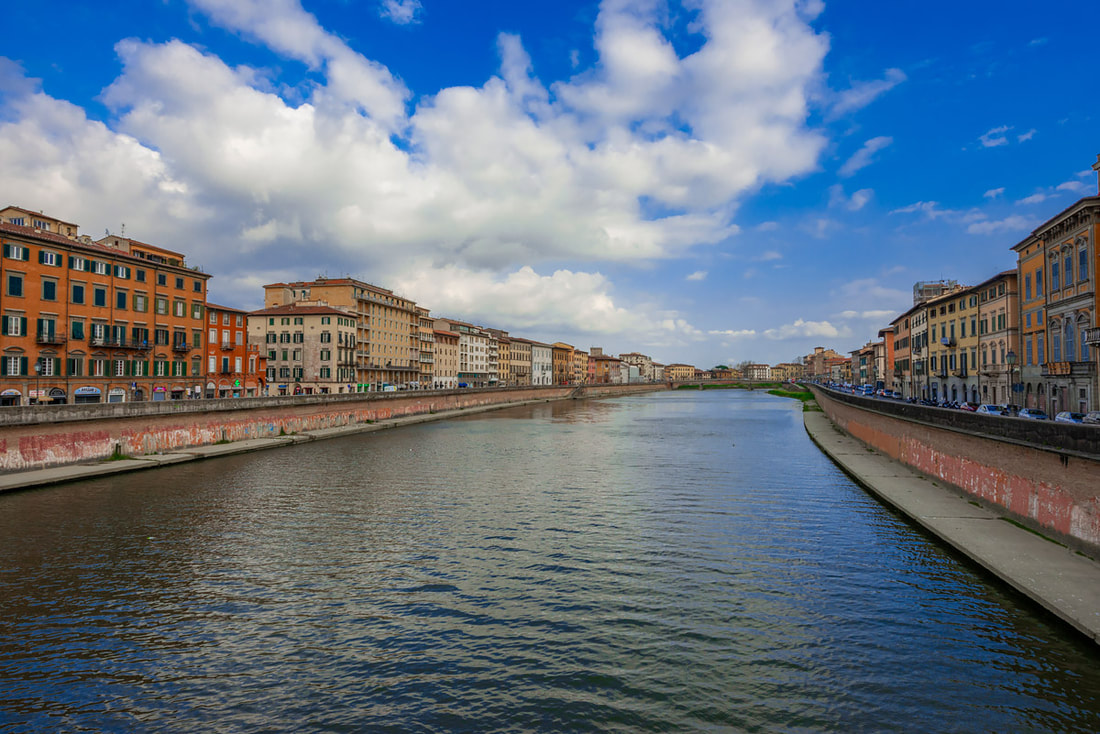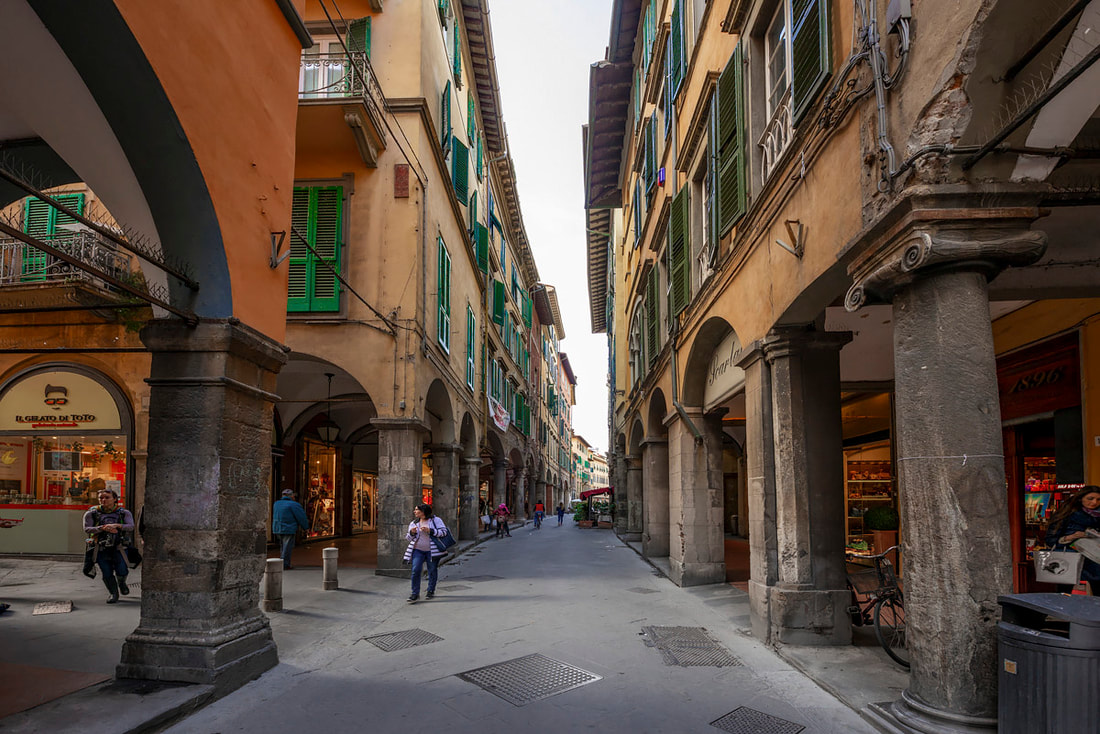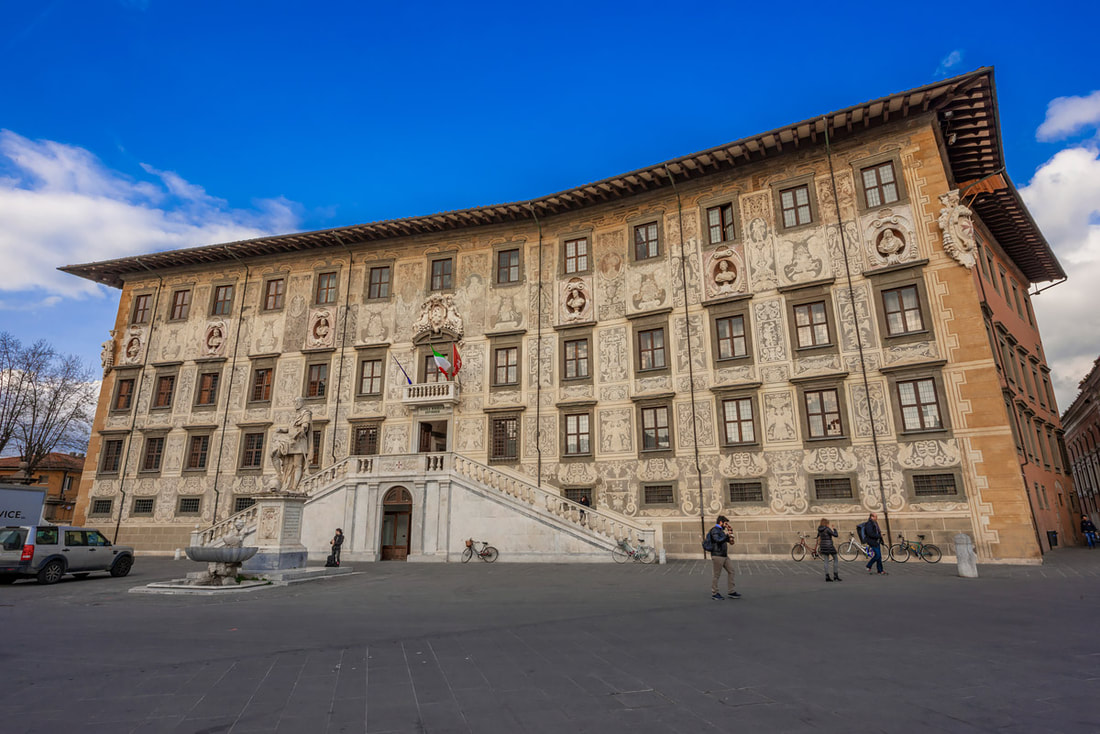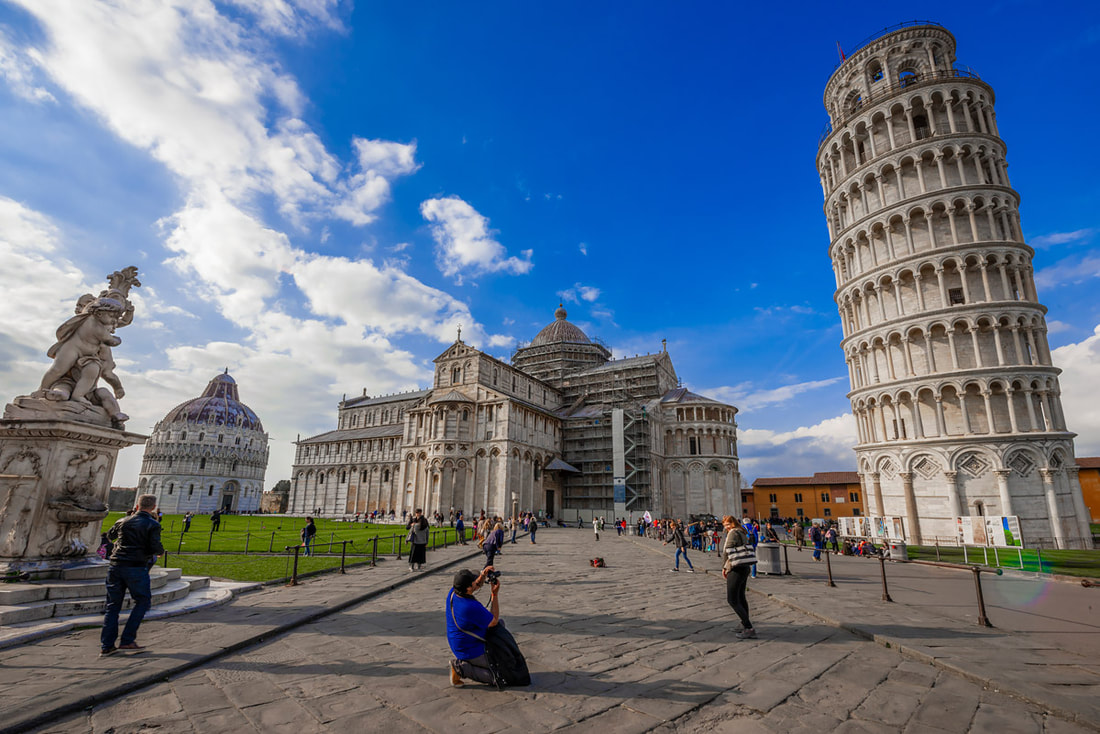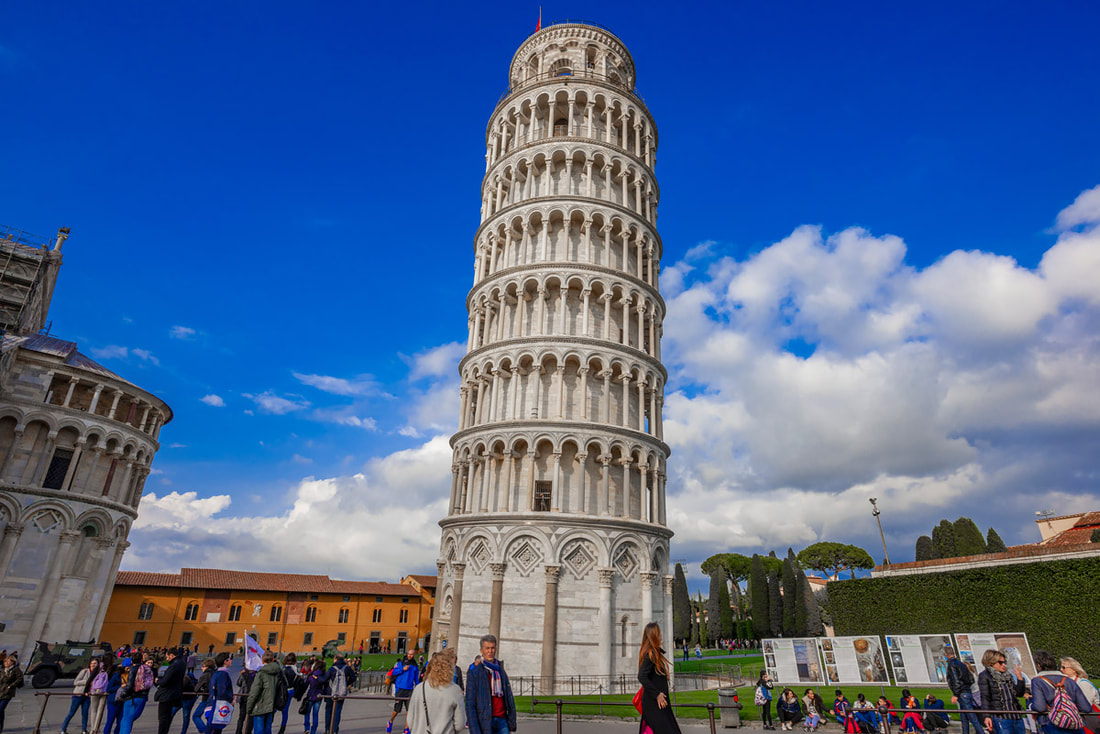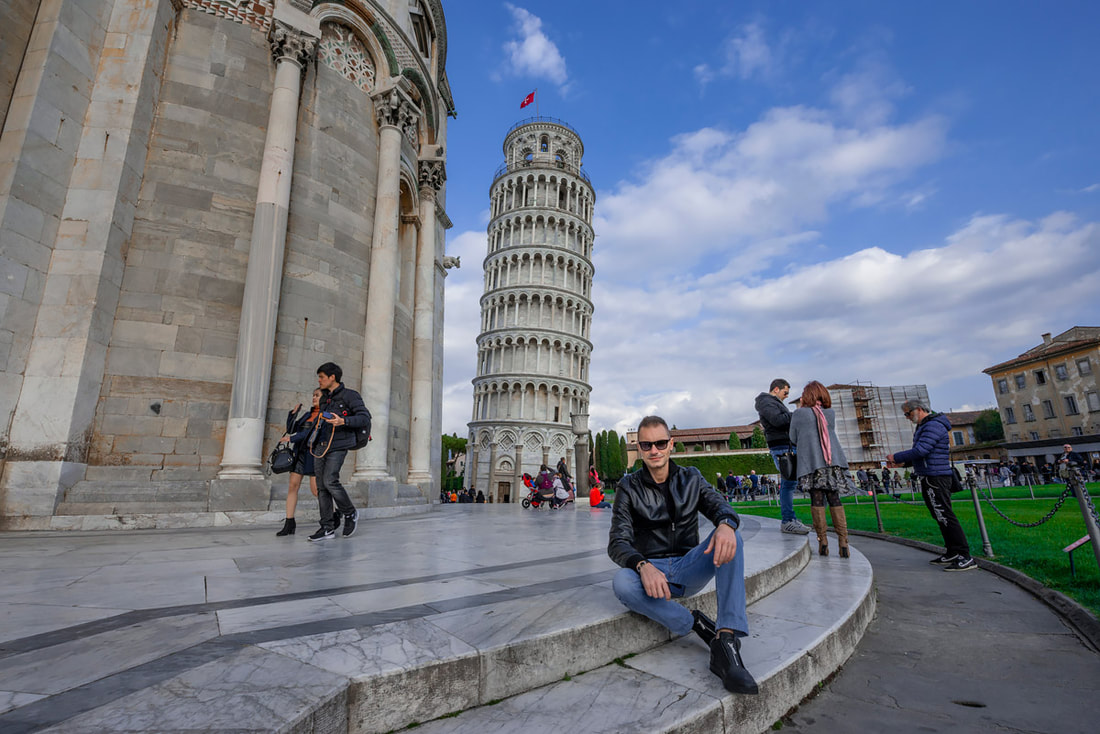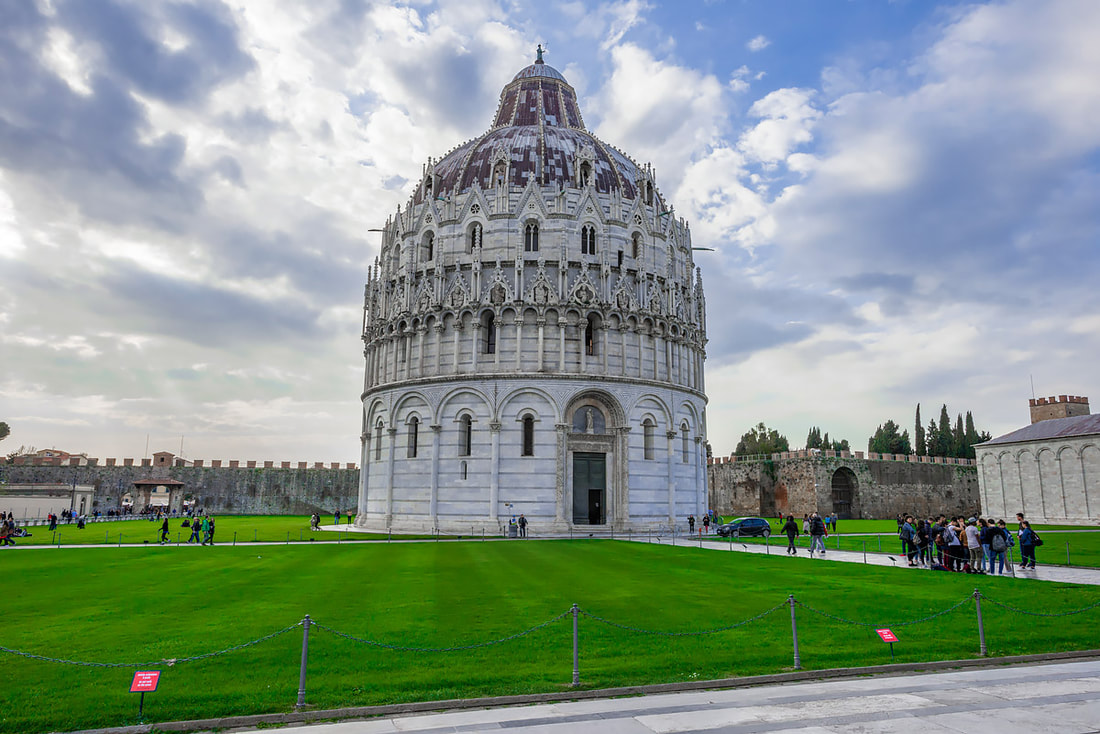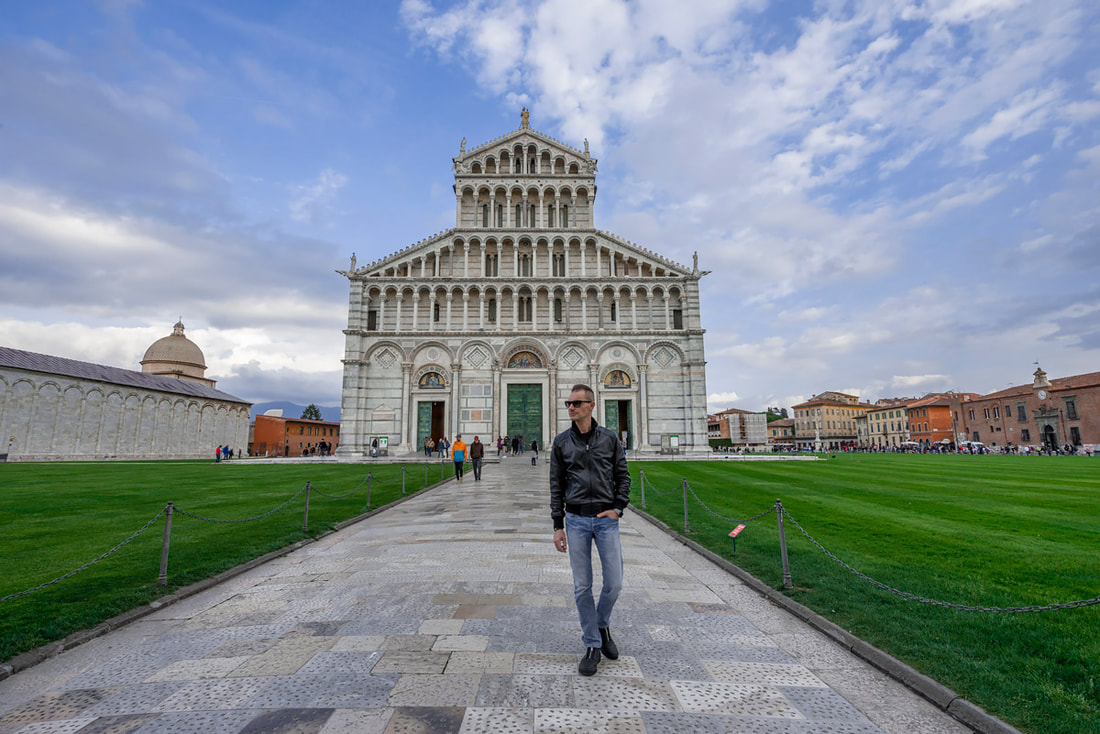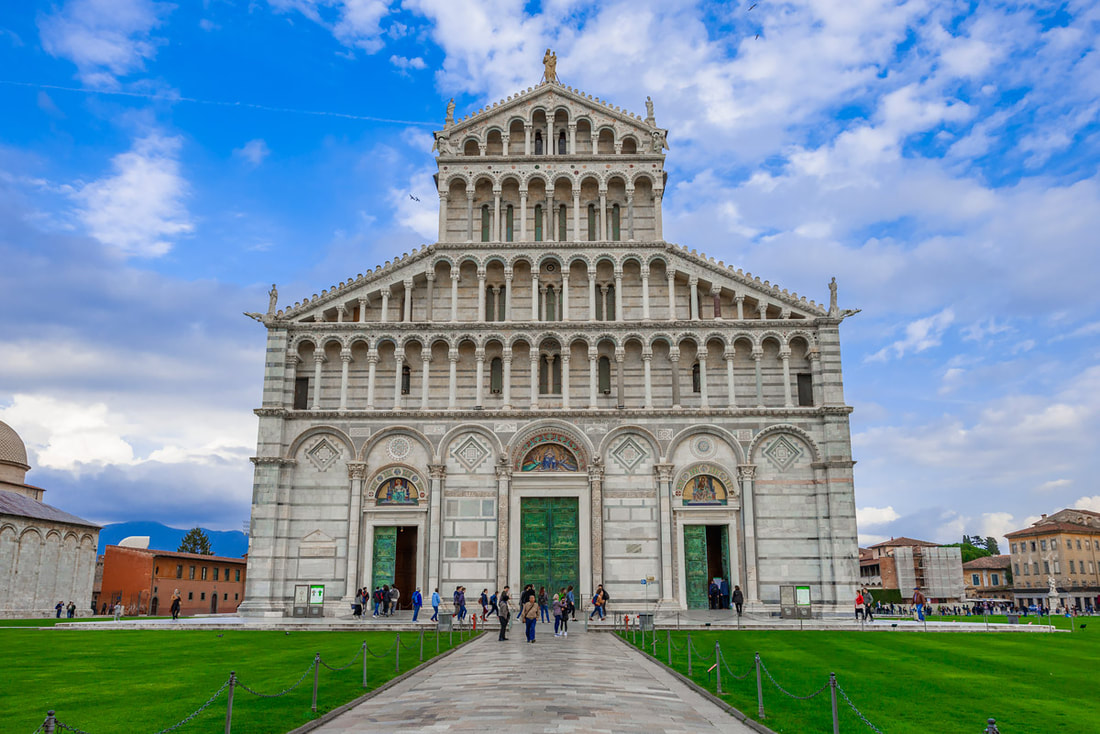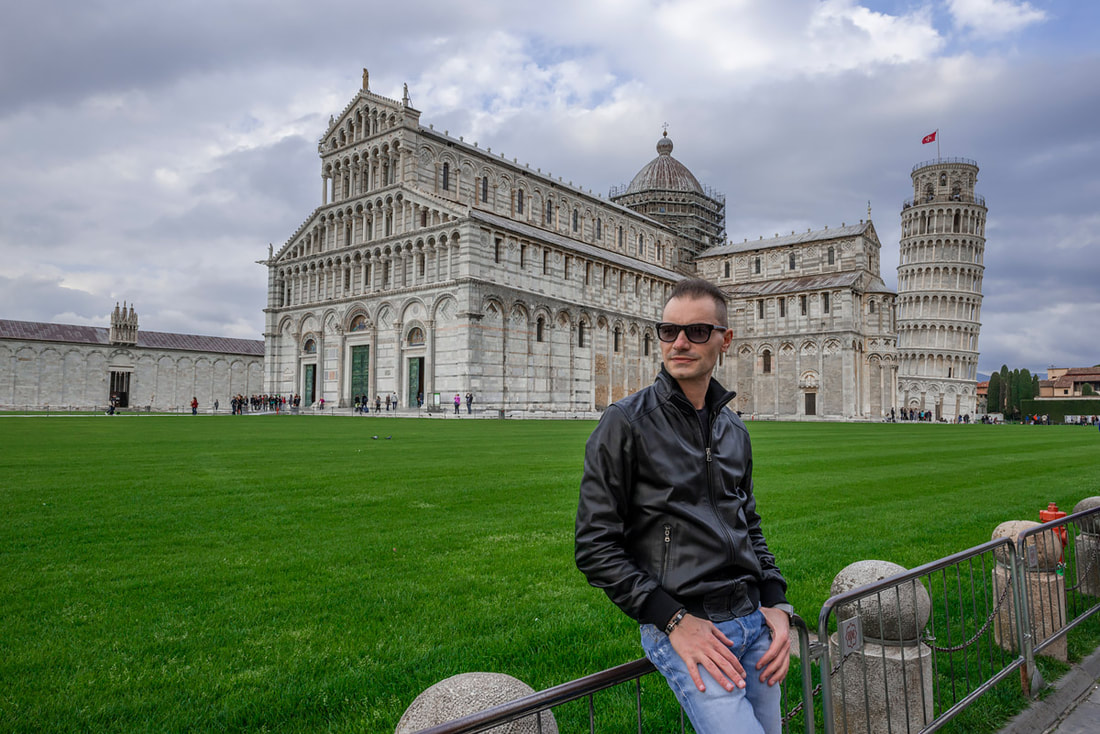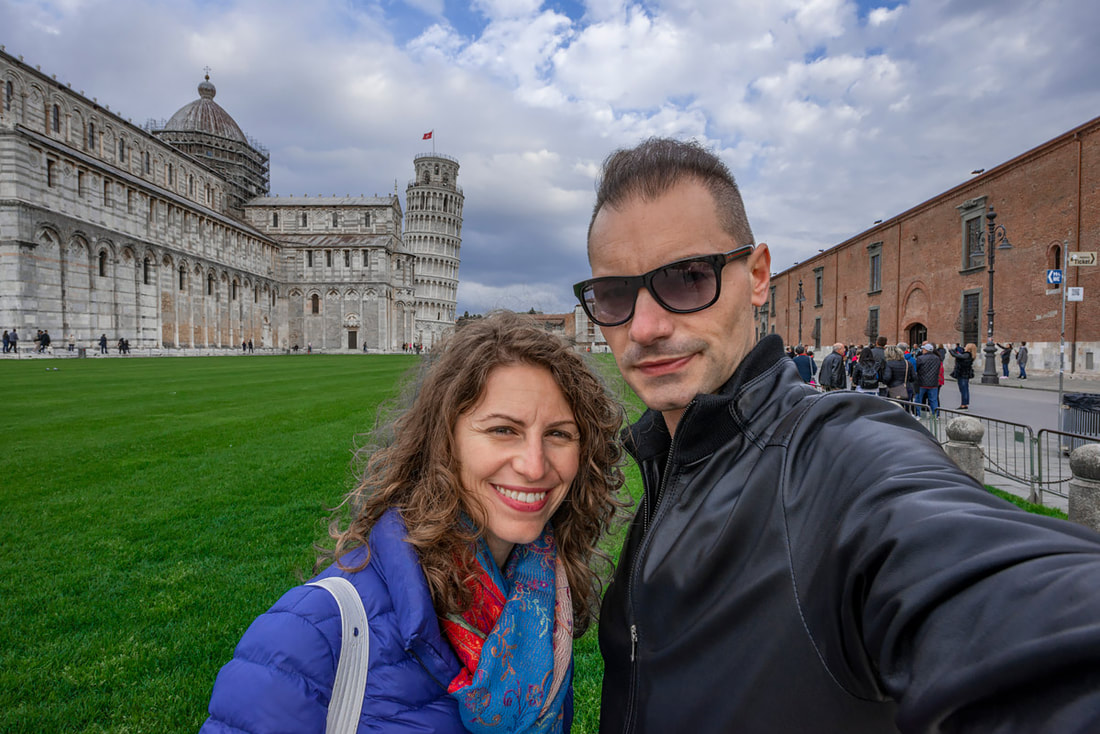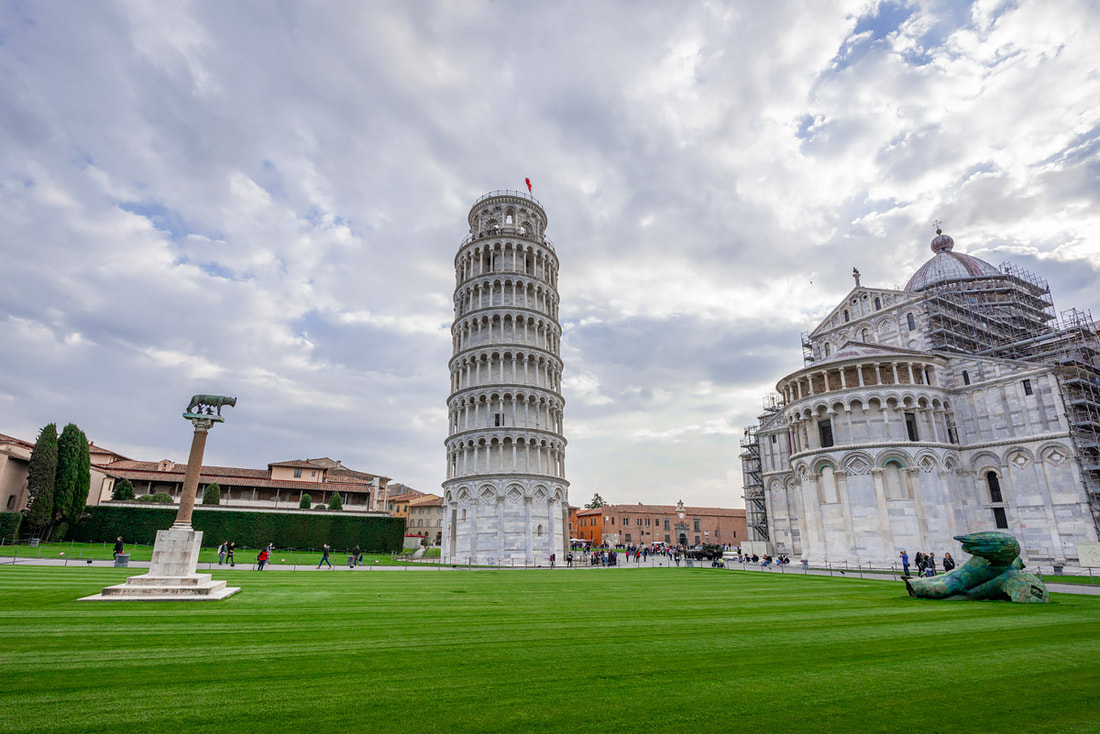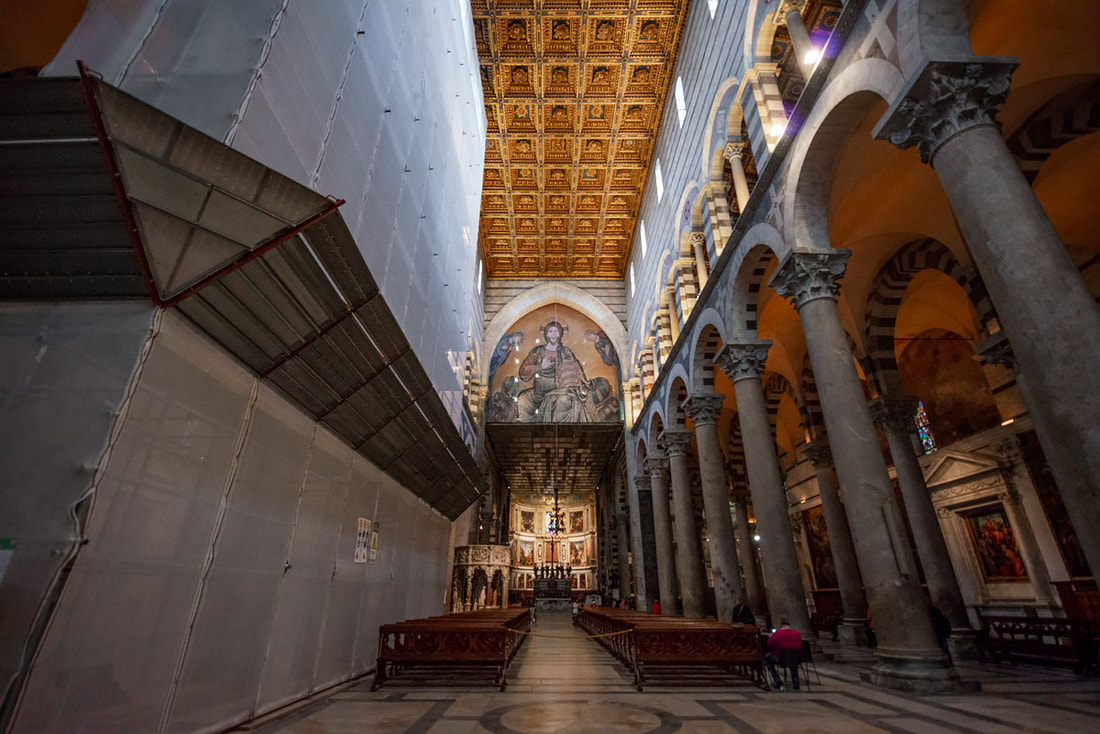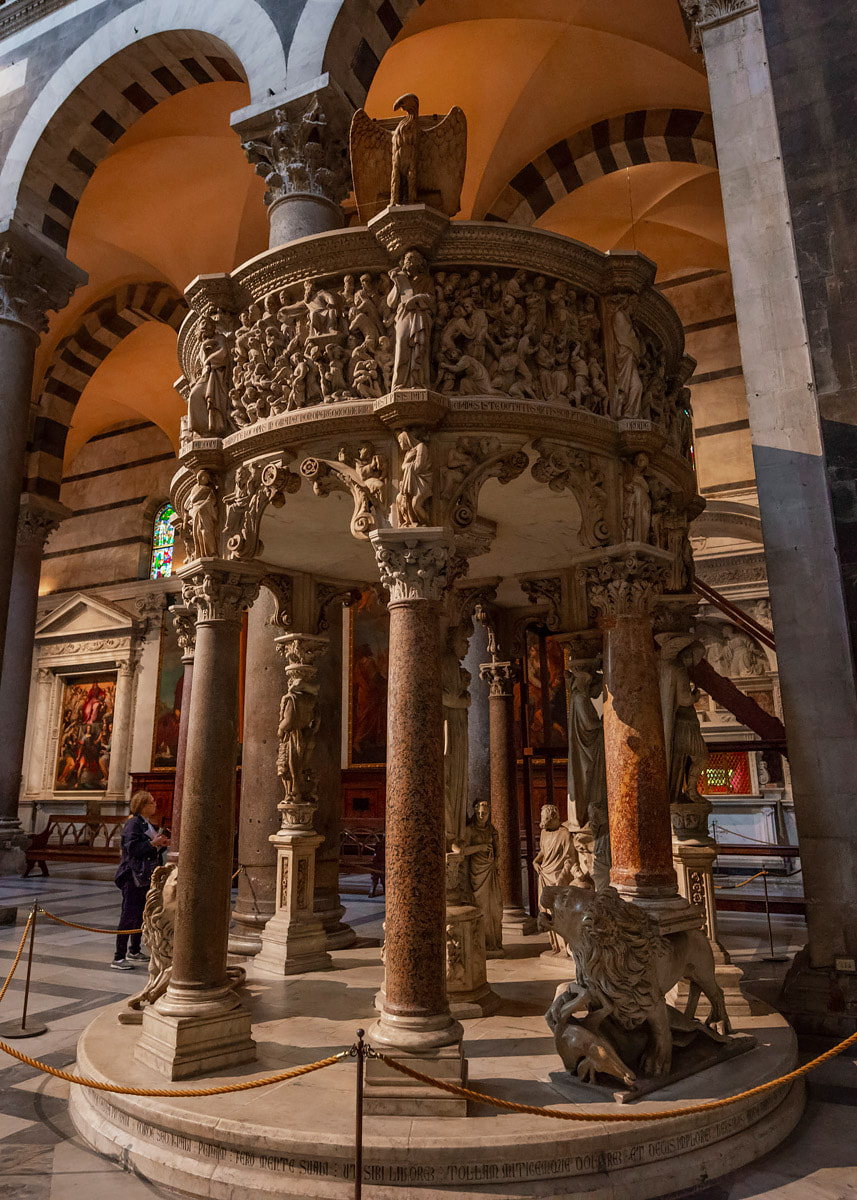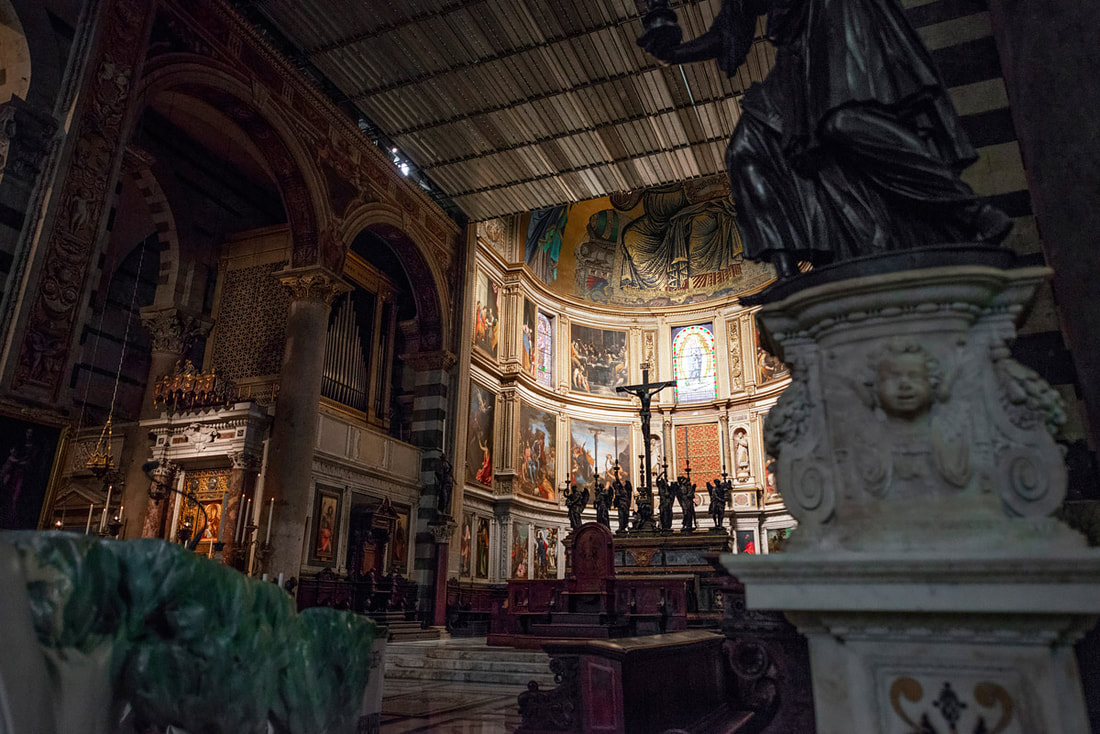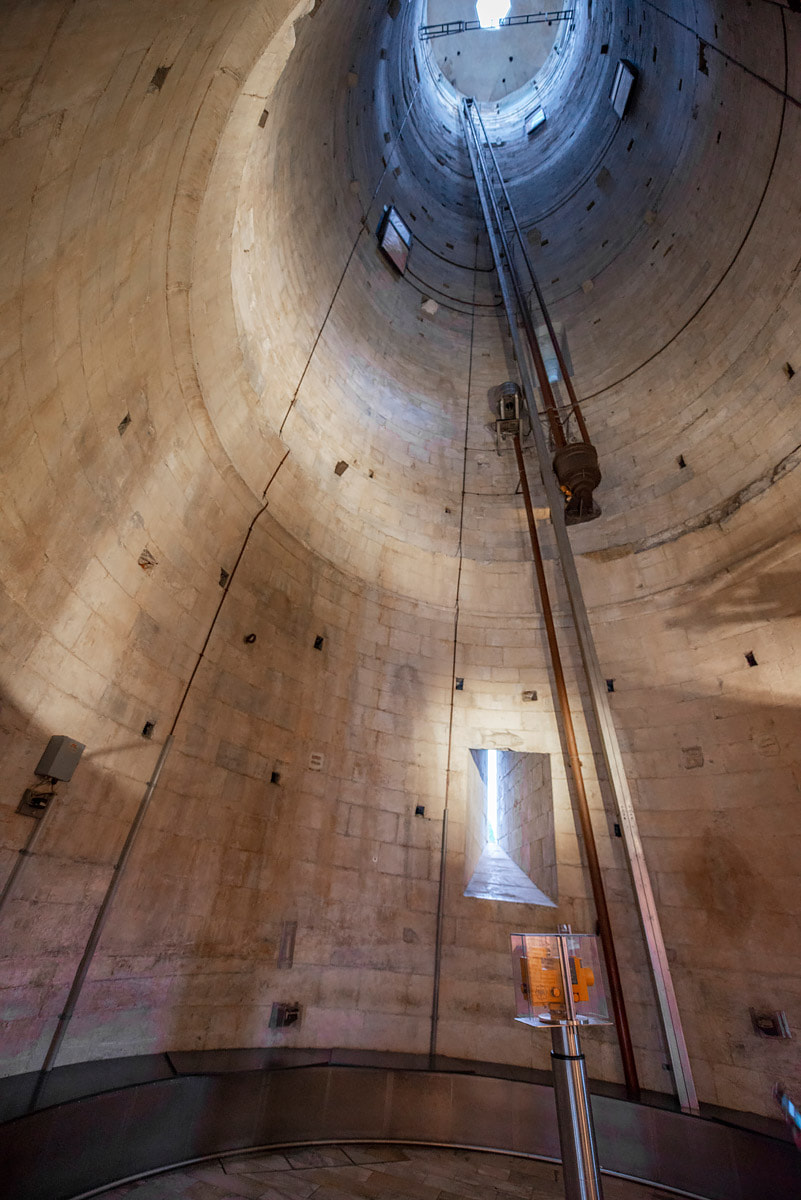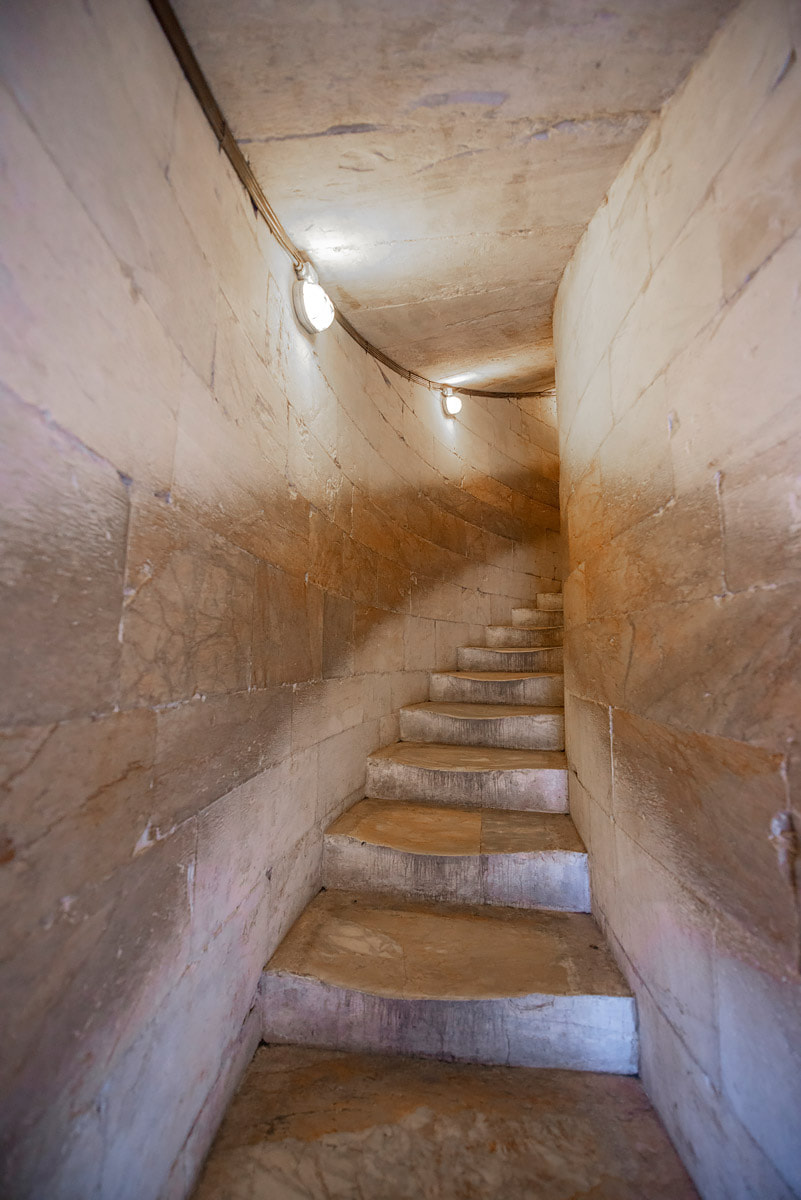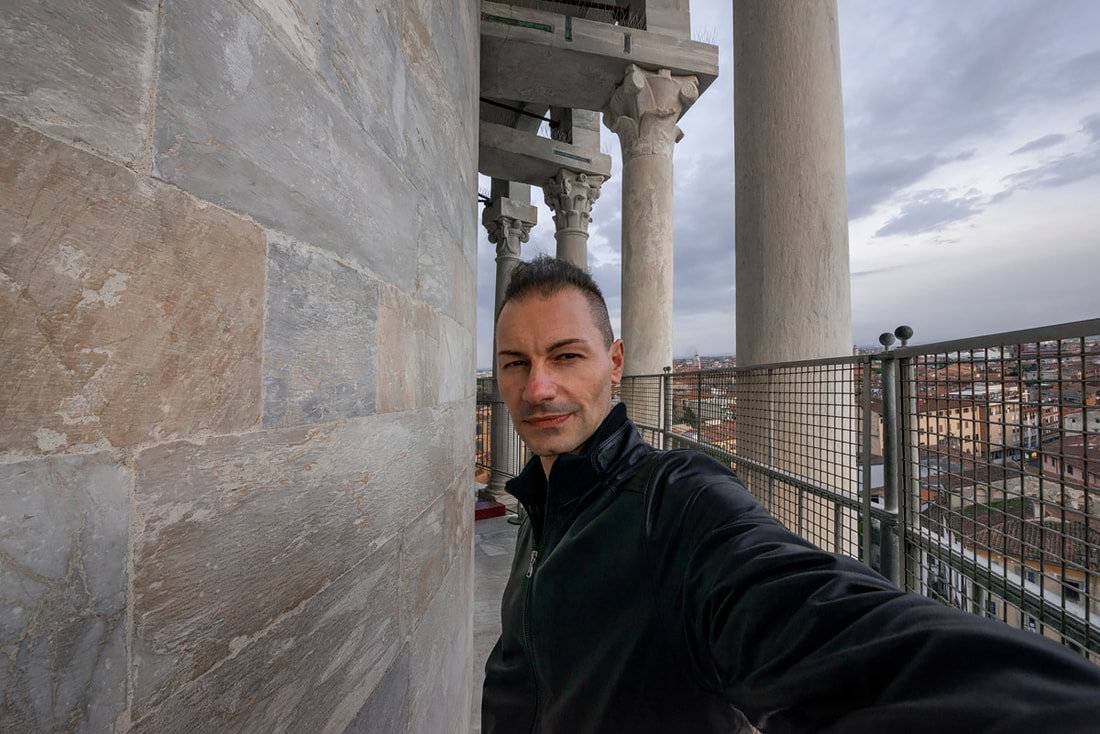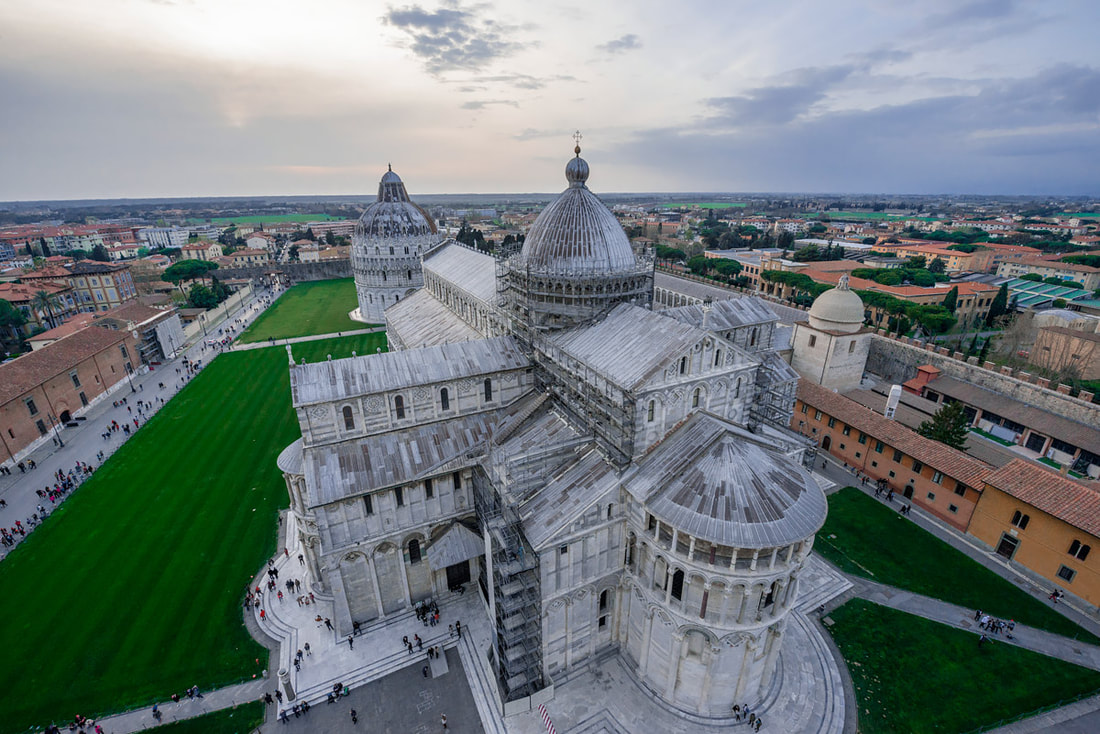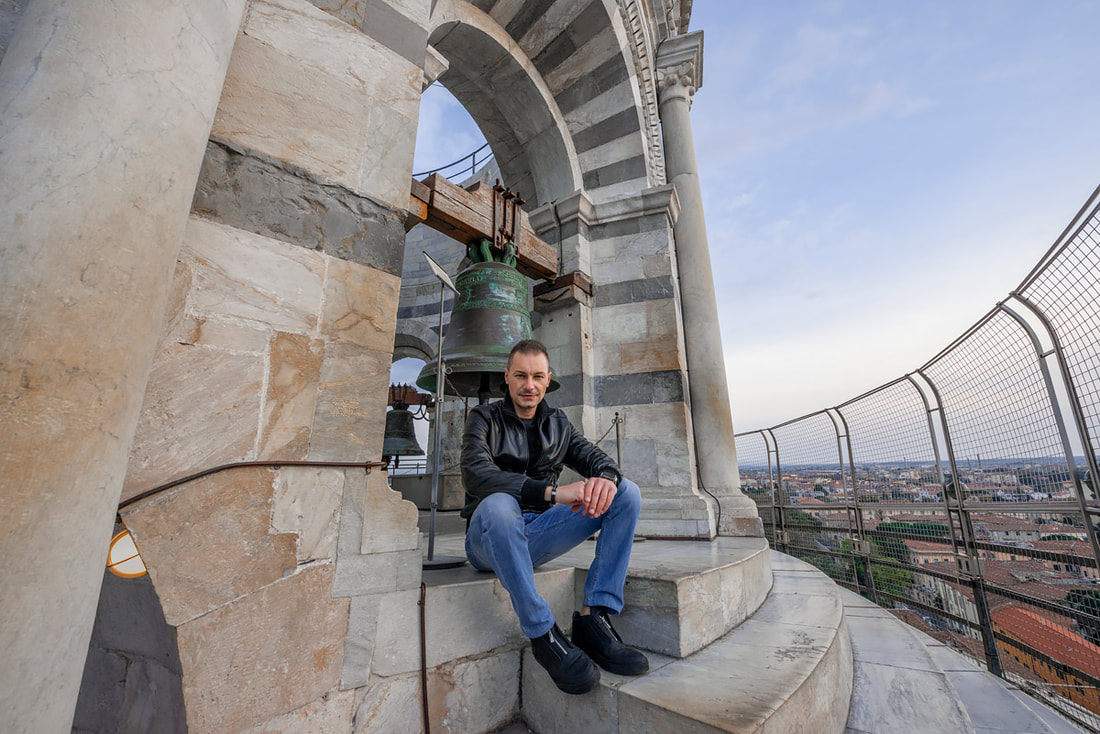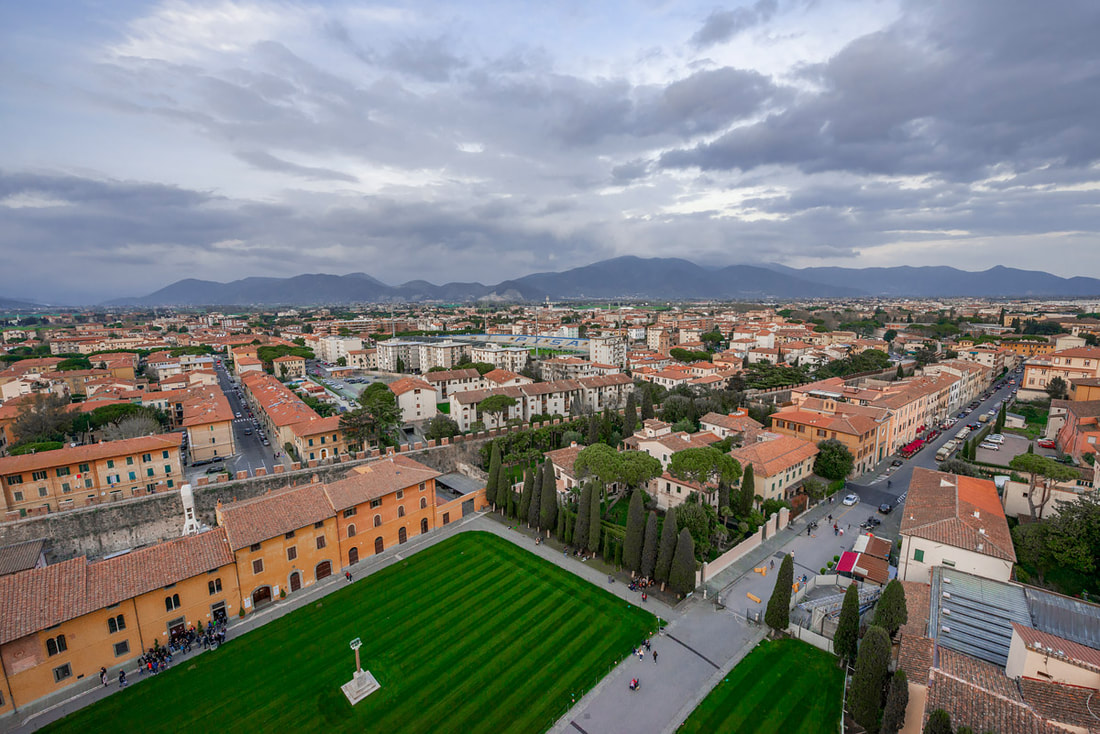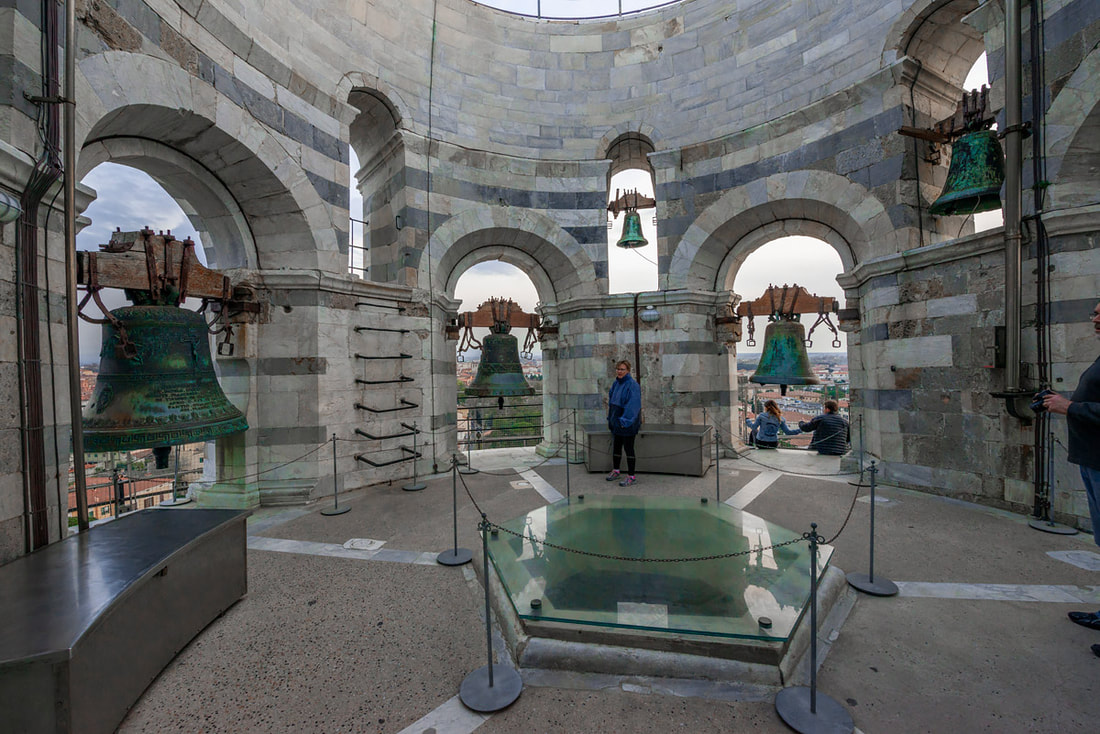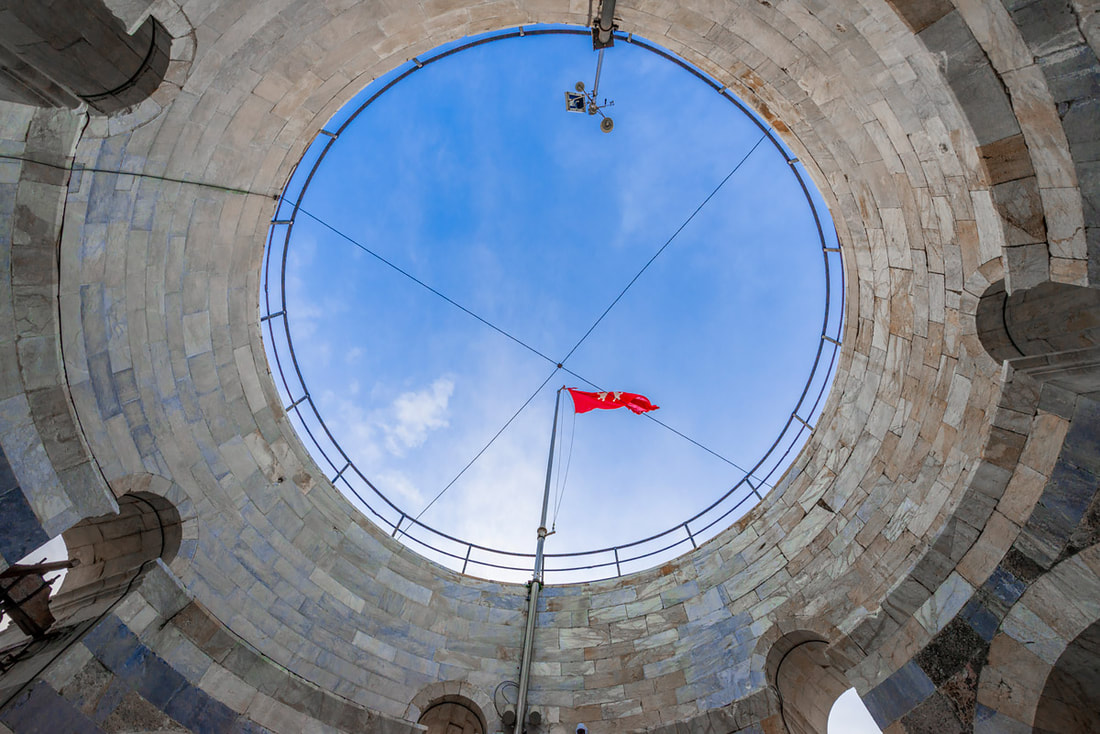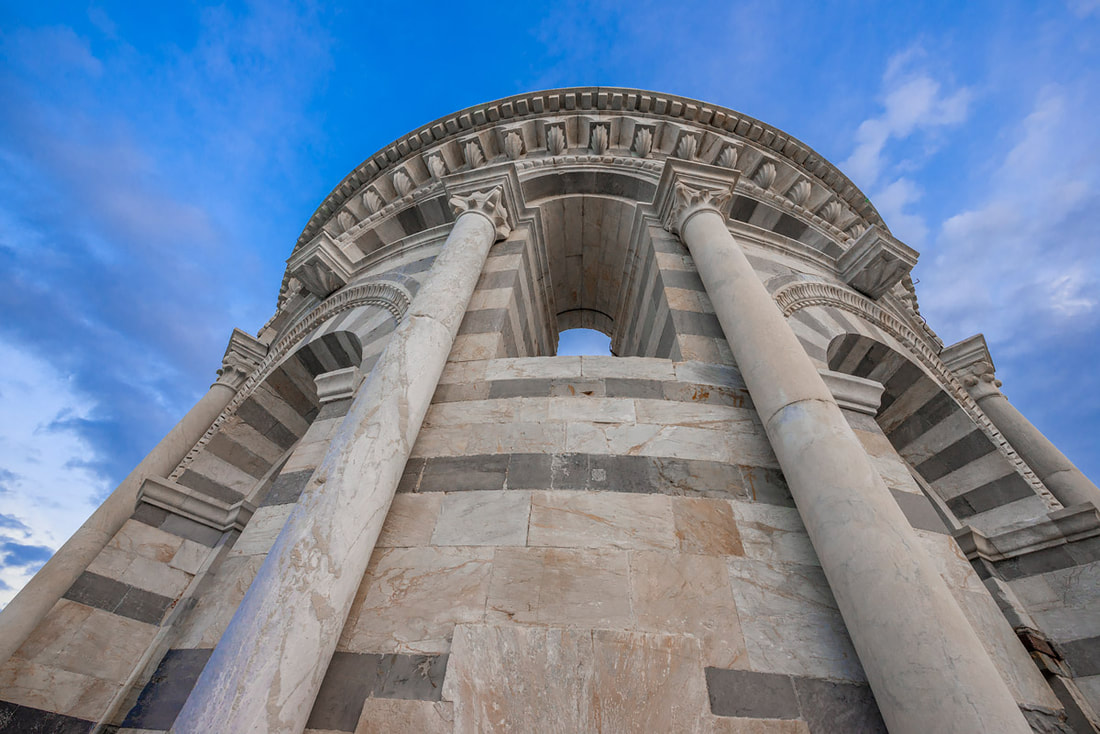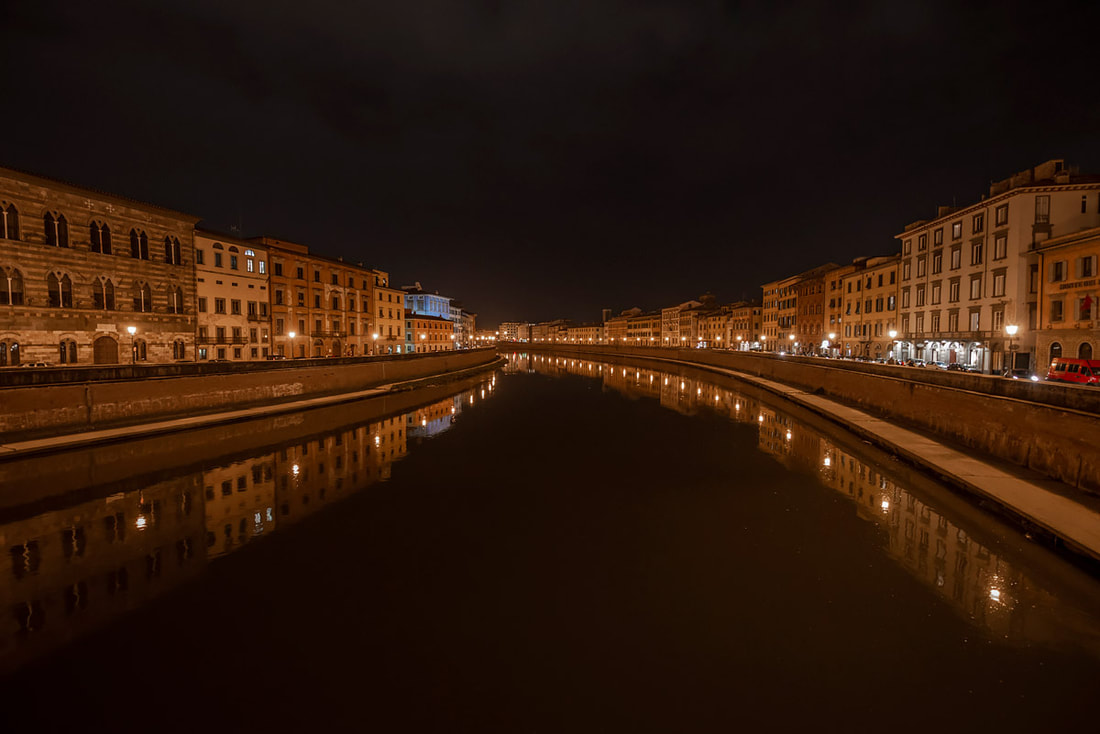By Antonio MalaraPisa is the final part of the journey made with my sister that led us to the rediscovery of Florence. As I told in that post, in the early afternoon of the last day spent in the Tuscan capital, we moved by train to Pisa. As for Venice and Florence, this Tuscan city was also a place from my childhood that I never visited in adulthood. Unlike the other cities mentioned though, Pisa was a place my father took us to many times. I don't remember exactly the number but I think we have visited it at least six times both alone and in the company of other family members. This means that I have clear memories of the city that go beyond those of browsing through old photographs. Unfortunately the memory only leads to “Piazza dei Miracoli” and the famous leaning tower because those were the only places we visited. The journey by train from Florence to Pisa lasted about an hour and for convenience, especially for the return home, we had chosen a discreet hotel right near the station. Unfortunately, upon arriving in the city, I immediately noticed that that area was not exactly the best. At that time, the street in front of the station was full of drunk immigrants who continued to drink talking loudly. It didn't bother me too much because we were only going to be there one night but I felt sorry for the city, that kind of welcome was definitely not elegant. We left the luggage immediately, the historic center of Pisa was not large and I had made a pedestrian path that would have led us to “Piazza dei Miracoli”. The first thing we crossed was “Piazza Vittorio Emanuele II” and just around a corner we discovered a work that I didn’t know at all. It was "Tuttomondo" a large graffiti by the American artist Keith Haring. Personally I didn’t know the artist but my sister did and she only remembered the existence of that work after seeing it, reacting with great enthusiasm. She briefly explained something about the artist to me but I must say that the large mural struck me immediately. It occupied the side wall of the church of “Sant'Antonio Abate” and was very colorful, as I like it. Even if I didn't start studying it carefully, I noticed that the figures were stylized and two-dimensional, which created a beautiful effect with those very bright colors. Surely the fact that the mural suddenly appeared to us, combined with its greatness, excited us more. After the photos of the mural we headed to “Corso Italia”, this pedestrian street was very nice with many shops and people walking around. Tere the city began to have another face, more normal and civilized, not like the area near the station. The road took us to “Piazza XX Settembre” which overlooked “Ponte di Mezzo” which crossed the Arno river. This area was very nice especially from the perspective of the bridge because from there we could see a bell tower sticking out of a building from the right distance. It was very original but honestly I don't know if it belonged to a church or something. On the bridge we also stopped to admire the panorama on both sides, even if the landscape with the colored houses was similar to what could be seen from the bridges of Florence, however this was less characteristic. There was no particular monument or something in the background in such a way as to give the landscape an added value. Immediately after crossing the bridge, we took “Borgo Stretto”, this was a very characteristic street above all for the presence of very ancient arcades or so they seemed. Compared to the normal arcades that had arched walls these were made up of columns, they were very original and I regret not having spent more time to photograph them. Another peculiarity of the street was the fact that it was very narrow, these details plus the presence of many shops, bars and people walking around, definitely gave a different tone to the city. “Borgo Stretto” was one of those areas that I hadn't really seen as a child and I discovered it with great pleasure. The path I had traced on Google Maps to reach “Piazza dei Miracoli” led me to cross “Piazza dei Cavalieri”. Right there was the "Scuola Normale Superiore", this is one of the most important universities in Italy and I remember I heard about it a lot as a child from people older than me. Basically, at the time, those who managed to attend and graduate from this university were considered geniuses. Finding myself in front of it as an adult and with all the experiences I have lived, I considered it only from an aesthetic point of view, not considering the individuals who frequented it at that time as brilliant. I must say that the building itself was beautiful also thanks to the fact that it was positioned asymmetrically to the square. In the central part there was a large staircase but with lateral ramps, the facade had many windows and many decorations plus different busts. I don't know who they belonged to and I haven't seen them up close, they were probably important people related to the university. After leaving the university, we continued our journey which after a short time brought us to “Piazza dei Miracoli” right in front of the famous tower. This tower is nothing more than the Cathedral bell tower but it’s separated, it is about 57 meters high and its image has become famous in the way due to the fact that it is tilted. The tower which dates back to the thirteenth century began to hang immediately after its construction due to the subsidence of the land. What you see today is not its maximum slope because over the years there have been several interventions to "straighten it", however the fact that this tower has always remained standing has made it unique. In my post on Venice I talked about how I discovered by chance that there is another leaning bell tower but in the Venetian city, however it is not as famous as this one, probably because the slope is minimal. Obviously, I had very vivid memories of this part of the city and the square. This was basically the only place in the city of Pisa where my father took us as a child. With my sister we got there from the south, so in a single glance we saw the tower on the right, the Cathedral in the center and the Baptistery of San Giovanni on the left. My first impulse once I got there was to rush under the tower and start taking pictures, both of it and selfies. It was like seeing a person who hadn't been seen for a long time, that tower for me was a living element rather than a static monument. Overcome my enthusiasm as a child, I began to enjoy the place more calmly, observing the details and turning around with my face upwards to look at that tower that defied gravity. In reality we were there that day because I personally wanted to overcome a taboo rather than make a dream come true. Although I had been there many times, my father had always forbidden us to climb to the top of the tower. Since he didn't want to do it, we weren't allowed to do it either. I don't remember if my sister had this desire as a child, but I did and one year I had come close to it. That time we were on vacation with our other relatives and an uncle of mine expressed his intention to go up, unfortunately he didn't want to take me with him either. It must be said that at that time on the tower there was no type of protection and it was also possible to go around the outside of every single floor, a dangerous but certainly unique thing. That day I watched my uncle from the time he walked into the tower and out of every floor until the sight allowed me. I don't remember how old I was, maybe ten years but it is since then that inside of me I wanted to fulfill the desire to climb to the top of that tower. Despite this, we have decided to leave that task for last, as a kind of celebration. Basically the whole area we were visiting had the same elements that existed in “Piazza del Duomo” in Florence. The Basilica, the Baptistery and the Bell Tower. Also from a design point of view the structures had similar elements except of course for the Tower. However, there was a clear difference regarding the area that housed these structures; while in Florence everything was within an urban context, with buildings all around, in Pisa these works were immersed in the greenery of a large unspoiled square. This context gave a different visiting experience, not only for the larger space but also for the beautiful green lawn, it gave the impression of the park where, however, impressive works could be found. That context led us to take a slow turn and it was nice to see the structures change their perspective as we turned around. When we moved towards the Baptistery we found ourselves in fact in front of the facade of the Basilica. This both from an architectural and a material point of view, recalled the churches seen in Florence, the main difference that the cathedral of Pisa had, was in the lower part where there were large entrance doors. The structure then developed in height with many columns that resembled a pyramidal shape. What struck me the most, however, was the stone avenue that actually connected the entrance of the Cathedral to the Baptistery, a sort of colored street that recalled the Roman streets and created a different effect. I don't know why but we didn't go inside to see the Baptistery, rather we went to the green area on the right side of the Basilica to get a wider view of the whole square. From there we had the most beautiful perspective over all the structures, plus that point was the best to better appreciate the slope of the tower. From there, in fact, the right aisle of the Basilica was right next to the tower and served as a perpendicular reference to measure the slope visually. That was the most popular corner where everyone stopped to take pictures, obviously we also dedicated ourselves to this with a lot of passion. Around 5 PM we entered to visit the interior of the Basilica and the thing that caught my attention was a work that I didn’t know at all. Some time later I discovered its importance thanks to a popular science television broadcast. It was "Pergamo" sculptural work by Giovanni Pisano dating back to 1300. Octagonal in shape, it was composed of columns and different types of sculptures that described episodes from the life of Christ such as the crucifixion or the kiss of Judas. I didn't know anything about this at that time, but the complexity of the elements still struck me. From the lions to the statues, from the columns to the images that also made up part of the architecture, the originality of the work was immediately perceived. Beyond the Pergamum, however, there was not much to see and a large scaffolding for restoration didn’t help to appreciate the beauty of the Basilica. However, it was possible to admire the altar that wasn’t inserted in the part to be restored. Leaving the Basilica we bought tickets for the big event, that was to climb to the top of the tower. After a short line (due to the checks that were then for anti-terrorism today would be for the virus) we went inside and immediately a strange iron structure caught our attention. They were two very long slabs that went up as far as the eye could see, an assistant explained to us that it was a tool to measure the slope, in reality she told us in a quick and concise way the history of the various slopes of the tower and the interventions that had been done over the years to correct them. I remember that using the instrument that indicated the current slope, he made us perceive that maximum never reached, it was really impressive. Immediately after we began the climb along the stairs that were similar to those of the dome of Florence but these turned in a circular way until the end, so we had the perception of seeing an infinite curve that went up, always the same. After about ten minutes we arrived at the top of the tower, a child's dream had finally come true even if as I mentioned before the various floors were closed so they couldn’t be visited. From up there the view was very beautiful especially in the direction of the Basilica and there was an interesting perspective, for the rest it was characterized by the red-orange roofs of the houses similar to those in Florence so a view that I did not particularly like. The protection nets were high but not very much, let's say that we could appreciate the view and take nice pictures. Also on the large circular space there were a series of bells, one of which was much larger than the others and it also had engravings. After seeing the one on Giotto's Tower, this was a bit smaller but hooked under an external arch, it was there as if it performed its functions and not as a decorative element. But the really special and exciting thing, the added value of climbing that tower, was not the view or the marble elements very present there, the original thing of being on top of the Tower of Pisa, was to live that experience in an inclined way. This was a real fun, the inclination was perceived and gave many ideas for original photos, plus we could feel the gravity of the tower itself when walking under the inclined part. It was like walking a slightly uphill path, very fun if done at that height. Also at the top we found another security guard, very nice with whom we stopped to talk. He explained to us that additional safety nets had been installed in recent years, unfortunately too many suicide events had occurred and therefore they had to take more effective precautions. We stayed there for about half an hour, which wasn't enough to see the sunset. That evening we had dinner in a nice place near the square and I took yet another cut of beef which was delicious. Returning to the hotel, we stopped at the most interesting points to take some night photos. The next morning the station area looked like a totally different place, there was no sign of drunk and harassing immigrants and instead it was full of normal people who reached their travel destinations. That “new” version of the station made me leave Pisa in a good mood. The taxi ride to the airport lasted ten minutes, which made Pisa a very well served city and easy to reach by public transport. Surely compared to the other returns to Venice and Florence, the one made in Pisa was different because there was a goal to be achieved. The beauty of the rediscovery was accompanied by the dream I had within me since I was a child. A different experience that gave me a unique sense of freedom and fulfillment. It’s never late to realize our dreams, small or large or partially, it is always worth pursuing them because they give incredible satisfaction and the inspiration to tell stories. Pictures: Antonio Malara
Camera: Nikon D800
0 Comments
Leave a Reply. |
